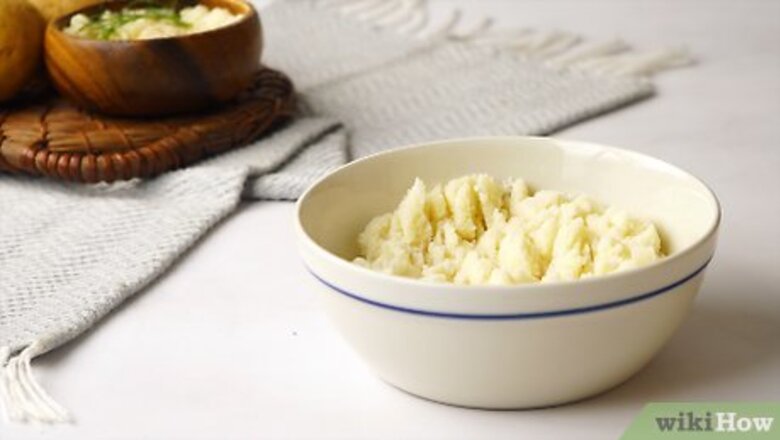
views
Reheating Refrigerated or Frozen Potatoes

Thaw your mashed potatoes. To serve reheated potatoes that are as moist as a freshly cooked dish, allow your potatoes to thaw first if you've frozen them. This way you can stir in additional cream more easily. If you reheat frozen potatoes straight from the freezer, allow extra cooking time in the beginning until they've warmed and softened enough to stir the cream in effectively.
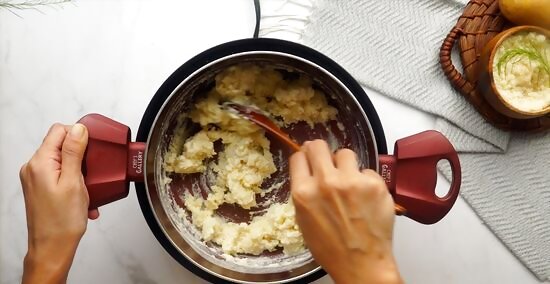
Use a pan on your stovetop. First, pour some cream. Bring it to a simmer. Stir your mashed potatoes into the cream evenly. Continue to stir until the potatoes are heated through. If needed, add more cream and wait for it to come to a simmer, then stir it into the potatoes. Depending on the amount of potatoes you’re reheating and the size of the pan, it’s best to start off with too little cream than too much. At the very least, use enough to coat the bottom of the pan. Use a food thermometer to check the potatoes’ internal temperature; for health reasons, the potatoes should reach at least 165º before they’re safe to eat.

Reheat the potatoes in a skillet. Grease your skillet with cooking oil. Set the burner to medium heat. Once your skillet’s hot, scoop your potatoes in. Flatten them into a pancake so they cook quicker. Stir them up frequently and flatten them again until they’ve heated through. The cooking oil should add some moisture to your potatoes. However, if they're still drying out, mix in some cream to rehydrate them. Use a food thermometer to check the potatoes’ internal temperature; for health reasons, the potatoes should reach at least 165º before they’re safe to eat.
Stick the potatoes in the oven. Preheat the oven to 350º. Transfer your potatoes to an oven-safe dish. Stir the potatoes with a small amount of cream to rehydrate them. Cover them with either the dish’s lid or aluminum foil. Once the oven’s reached the desired temperature, place the dish inside. Cook for roughly 30 minutes. Depending on the amount of potatoes you’re reheating, check them every 5 minutes starting at the 15-minute mark to see if they’ve already heated through. Stir in more cream if the potatoes are drying out too much. Use a food thermometer to check the potatoes’ internal temperature; for health reasons, the potatoes should reach at least 165º before they’re safe to eat. Unfortunately, your potatoes are bound to lose moisture as you reheat them. Adding in some cream, butter, or sour cream can help compensate for this.
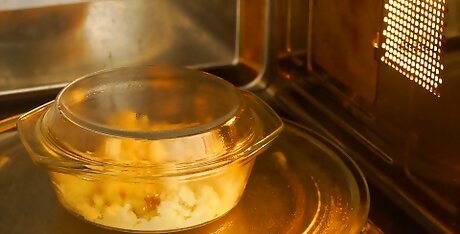
Nuke the potatoes. Transfer your potatoes to a covered, microwave-safe dish. Stir in a small amount of cream to rehydrate them. Cook them in your microwave at half-power for a couple minutes. Uncover the dish, stir your potatoes, and sample to judge the heat. Repeat as needed until your potatoes reach your desired temperature. Use a food thermometer to check the potatoes’ internal temperature; for health reasons, the potatoes should reach at least 165º before they’re safe to eat. Once your potatoes are hot, feel free to stir in some extra cream and butter.
Keeping Potatoes Warm After Cooking
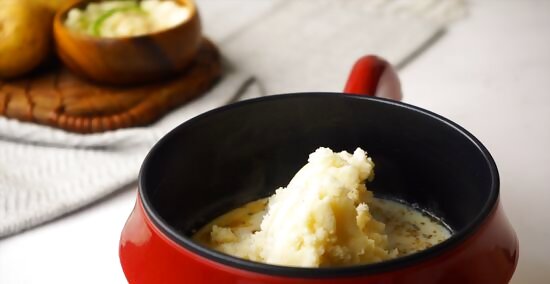
Break out your slow cooker. Grease the inside with butter. Pour enough cream or milk to line the bottom. Scoop your potatoes in, stir, and set the cooker to LOW. Serve your potatoes at any time up to 4 hours after doing so. Continue to stir at least once an hour in the meantime.
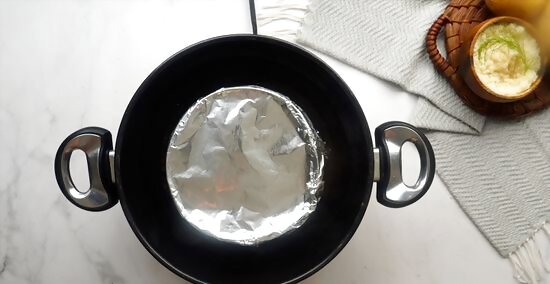
Make an impromptu double-boiler. Transfer your potatoes to a bowl. Cover the bowl with aluminum foil, plastic wrap, or a clean dish towel. Break out a pan large enough to fit the bowl. Fill the pan with a fair amount of water to boil (if the pan is deeper than the bowl, be careful not to fill it with too much water; you don’t want to submerge the bowl). Bring the water to a boil, then lower the heat to simmer. Place the bowl into the water. Stir your potatoes every 15 minutes until your meal is ready to serve. Add more boiling water to the pan if the original water begins to evaporate.
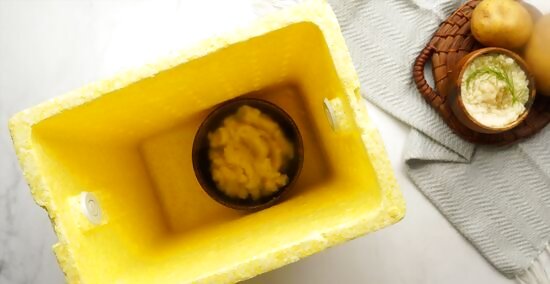
Turn a cooler into a heater. If you don’t have a burner to spare on your oven, grab an ice cooler. Instead of ice, boil some water and fill the bottom. Cover your bowl of potatoes with aluminum foil, plastic wrap, or a dishcloth. Set your bowl inside the cooler and seal the lid. Stir your potatoes every 15 minutes until your meal is ready to serve. If the water inside the cooler cools off, drain the cooler and add more boiling water to keep your potatoes warm. If your cooler is too small to fit your bowl of potatoes, scoop them into heavy-duty, sealable storage bags and set those inside your cooler.
Prepping Your Potatoes for the Freezer or Fridge
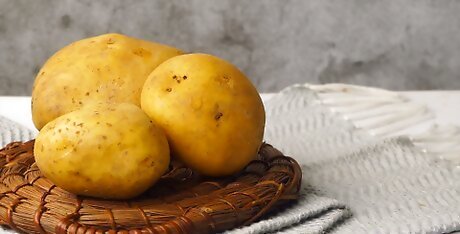
Use the right ingredients. If possible, avoid starchy potatoes, like russets, since starch will effect your mashed potatoes’ texture when frozen. Use a waxy or all-purpose potato, like Red Bliss (waxy) or Yukon Gold (all-purpose), which have move moisture. Add plenty of cream, butter, and/or cream cheese to your recipe to keep your potatoes moist.
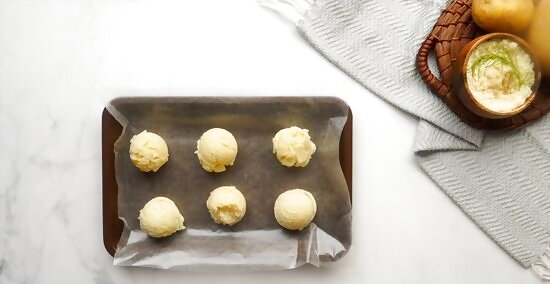
Portion your potatoes before freezing. Line a baking sheet with parchment paper. Dole your mashed potatoes out into single servings with an ice cream scooper or measuring cup. Freeze the tray until the potatoes harden completely. Switch them to a storage bag or other container. Then place them back into the freezer and help yourself to a serving at a time.
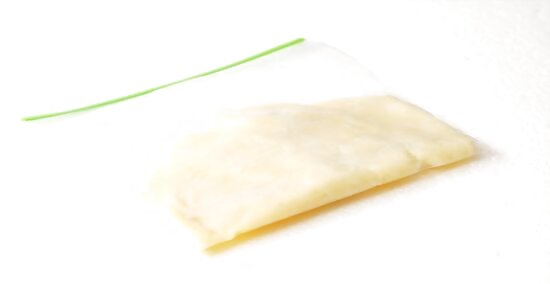
Flatten your potatoes. If storage space in your freezer is an issue, transfer your warm mashed potatoes into small storage bags. If you’re going to reheat them periodically instead of all at once, choose a size that will hold the number of servings you expect to reheat at one time. Fill them and then flatten the potatoes with the bag open so air can escape. Then seal each bag and freeze as many as space permits. Once they’re frozen hard, stack or otherwise arrange them in your freezer to optimize space.


















Comments
0 comment